Specialized Turbo Levo Comp Alloy Gen 4 Review | Full Power, Full Control
The more economical options in the Levo line still deliver serious power, a massive battery, and Specialized’s second-to-none frame design for all-mountain riding.
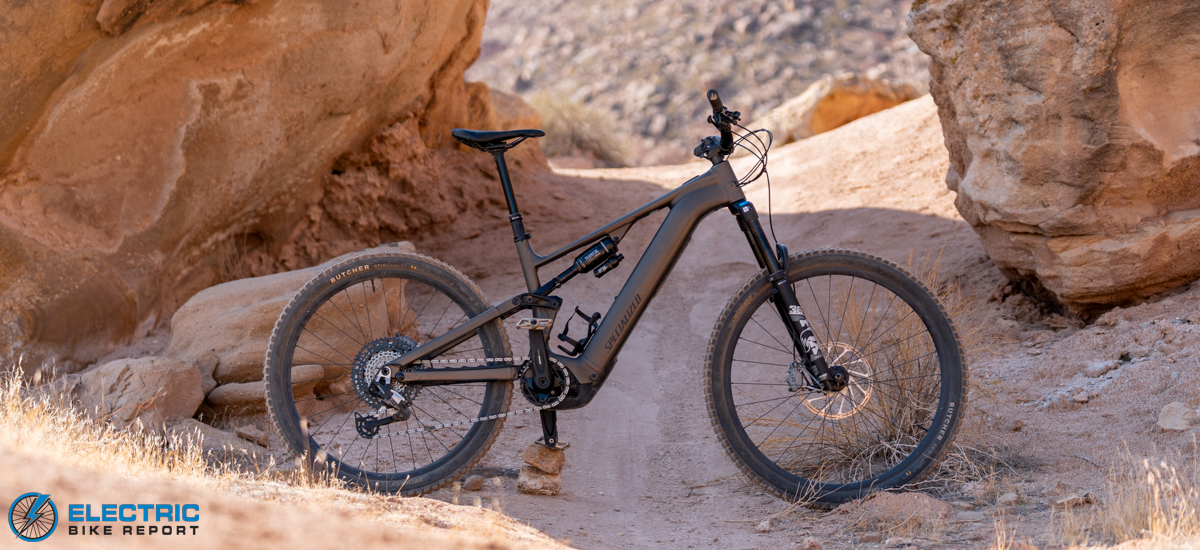
Specialized’s Turbo Levo Gen 4 is the kind of sequel that doesn’t just continue a legacy, it reasserts it.
The previous model was already a fan favorite, renowned for its balanced geometry, smooth power delivery, and a ride feel that struck the sweet spot for nearly everyone, making it an all-around excellent choice for an all-mountain bike. After a few weeks reviewing the Specialized Turbo Levo Gen 4, I can confidently say it raises the ceiling yet again, building on what worked, while adding impressive tech and capability in the process.
At the heart of the update is the new Specialized 3.1 motor which packs 666W of peak power and 101Nm of torque. That’s elite-tier power, but what makes it shine is how seamlessly that power blends into the ride. The brand’s “where super meets natural” slogan doesn’t feel like a stretch; it’s a rather fitting summary.
The bike moves well on its mullet setup, the frame’s geo is meaningfully adjustable, and it’s equipped for long, hard days with an 840Wh battery tucked into the chunky downtube (which also houses SWAT internal storage for tools, snacks, and gear). The suspension setup retains the familiar 150/160mm travel but adds a twist with the new GENIE shock system, which further refines rear shock performance with improved progression and less bottom-out.
There’s a lot going on here, but it all ties together. The Turbo Levo Gen 4 feels like Specialized’s answer to the question: Can one eMTB truly do a bit of everything for riders of any skill level? Its versatility, power, and dialed-in ride will be able to satiate a lot of different appetites.
Of course, there are tradeoffs. The alloy version has some heft, and the oversized downtube won’t win any minimalist design awards, but for what it offers, those are pretty easy to live with.
So, whether you’re brand new to eMTBs or a seasoned trail rider chasing a top-tier experience without jumping to a carbon frame price point, the Turbo Levo Gen 4 makes a compelling case. It’s confident, capable, and surprisingly accessible for a bike that feels this close to supernatural.
Class 3 (pedal assist to 28 mph)
 Pros
Pros- Elite motor performance. The Specialized 3.1 mid-drive motor delivers 666W peak power and 101Nm of torque. It has punchy yet refined output with buttery smooth engagement across cadences.
- Adjustable geometry. Riders can dial in their preferred ride feel with flip chips at the shock and seat stays, plus a 3-position adjustable head tube angle.
- Quiet, natural ride feel. Despite its power, the motor remains impressively quiet and intuitive, helping the bike feel nimble and planted even on techy terrain.
- Big battery, long range. The 840Wh battery provided one of our longest range results to date in max assist, with flexibility to add a 280Wh range extender or downsize to a 600Wh battery to save weight.
- App & display integration. The MasterMind display is clean and informative, while the Specialized app unlocks deep customization, ride tracking, auto-lock security features, and Apple Find My integration.
- SWAT storage & smart design touches. Hidden storage in the downtube means you can ditch the pack for shorter rides, and a tool hides inside the stem cap for convenient battery access.
- Great suspension with GENIE tech. Fox 36 Rhythm fork and Float X shock with Specialized’s GENIE system offer plush support and better bottom-out resistance.
- Mullet wheel setup feels agile. The 29” front / 27.5” rear setup, paired with shorter chainstays, keeps the handling snappy and fun despite the bike’s heft.
 Cons
Cons- Bottle cage fitment is tight. The built-in storage and frame shape may limit you to smaller water bottles.
- Stem tool can stick. The SWAT tool hidden in the stem needed some grease to function smoothly out of the box.
- Battery: 840Wh battery (600Wh compatible, 280Wh range extender available)
- Charger: Specialized 4-amp charger
- Display: MasterMind T3 Display System, 2.2″ high resolution color screen, fully customizable with Specialized App
- Motor: Specialized 3.1 Motor, 101Nm torque, 666Nm power
- Pedal Assist:Torque Sensor, 3-level plus auto mode with programming
- App:Specialized
- UL Certification:UL 2849 & UL 2271
- Brakes:SRAM Maven Bronze, 4-piston caliper, hydraulic disc, 220mm Centerline rotor front, 200mm Centerline rotor rear
- Fork:FOX 36 Rhythm, 29″, S2-S6: 160mm S1: 150mm, GRIP damper with Sweep adjust, 44mm offset, 15x110mm boost, through axle
- Shock:S2-S6: FOX FLOAT X Performance with Specialized GENIE Shock Tech, Ride Dynamics Trail Tune, 2-position lever, LSR adjustment, 210x55mm, S1: FOX FLOAT Performance with Specialized GENIE Shock Tech, Ride Dynamics Trail Tune, 2-position lever w/ LSR adjustment 210x55mm
- Linkage:Geo-adjust Horst Pivot
- Frame: Levo 4 M5 Alloy frame, 150mm travel, adjustable chainstay, adjustable head tube angle, adjustable bottom bracket, internal SWAT storage w/ 148mm spacing, 29″ front wheel/27.5″ rear wheel, fork travel up to 180mm
- Drivetrain:SRAM Eagle 90 T-Type, XS 12-Speed cassette, 10-52t, 34t chainring
- Grips: Specialized Trail Grips
- Saddle: Bridge Comp, Hollow Cr-mo rails 155/143
- Seatpost: X-Fusion Manic, infinite adjustable, two-bolt head, bottom mount cable routing, remote SLR LE lever, 34.9, S1: 100mm, S2: 125mm, S3: 150mm, S4: 170mm, S5/S6: 190mm
- Handlebar: SRAM S1000 Crankset, ISIS Interface, Integrated Guard, 55mm Chainline, 155mm
- Cranks: Praxis forged M30, custom offset, 160mm
- Wheels: Specialized, hookless alloy, 30mm inner width, tubeless ready
- Tires: Butcher, GRID GRAVITY casing, GRIPTON® T9 compound, TLR, 29×2.4″ front; 27.5×2.4″ rear
- Hubs: Alloy, sealed cartridge bearings, 15x110mm thru-axle, 28h front; 12x148mm thru-axle, 32h rear
- Spokes: DT Swiss Industry
Geometry
| Geometry | S1 | S2 | S3 | S4 | S5 | S6 |
|---|---|---|---|---|---|---|
| Crank Length | 155mm | 155mm | 155mm | 155mm | 155mm | 155mm |
| Handlebar Width | 780mm | 780mm | 800mm | 800mm | 800mm | 800mm |
| Stem Length | 40mm | 40mm | 40mm | 40mm | 40mm | 40mm |
| Saddle Width | 155mm | 155mm | 143mm | 143mm | 143mm | 143mm |
| Seatpost Length | 100mm | 125mm | 150mm | 170mm | 190mm | 190mm |
| Stack | 609mm | 618mm | 626mm | 638mm | 652mm | 667mm |
| Reach | 407mm | 435mm | 455mm | 480mm | 505mm | 535mm |
| Headtube Length | 94mm | 95mm | 103mm | 117mm | 132mm | 149mm |
| Headtube Angle | 64° | 64° | 64° | 64° | 64° | 64° |
| BB Height | 355mm | 350mm | 350mm | 350mm | 350mm | 350mm |
| BB Drop | 24mm | 29.5mm | 29.5mm | 29.5mm | 29.5mm | 29.5mm |
| Trail | 132mm | 132mm | 132mm | 132mm | 132mm | 132mm |
| Fork Length (full) | 577mm | 577mm | 577mm | 577mm | 577mm | 577mm |
| Fork Rake/Offset | 44mm | 44mm | 44mm | 44mm | 44mm | 44mm |
| Front Center | 744mm | 765mm | 789mm | 820mm | 851mm | 888mm |
| Chainstay Length | 435mm | 435mm | 435mm | 435mm | 435mm | 435mm |
| Wheelbase | 1179mm | 1200mm | 1223mm | 1254mm | 1286mm | 1323mm |
| Bike Standover Height | 753mm | 753mm | 754mm | 753mm | 758mm | 761mm |
| Seat Tube Length | 379mm | 390mm | 405mm | 425mm | 445mm | 465mm |
| Seat Tube Angle | 76° | 77° | 77° | 77° | 77° | 77° |
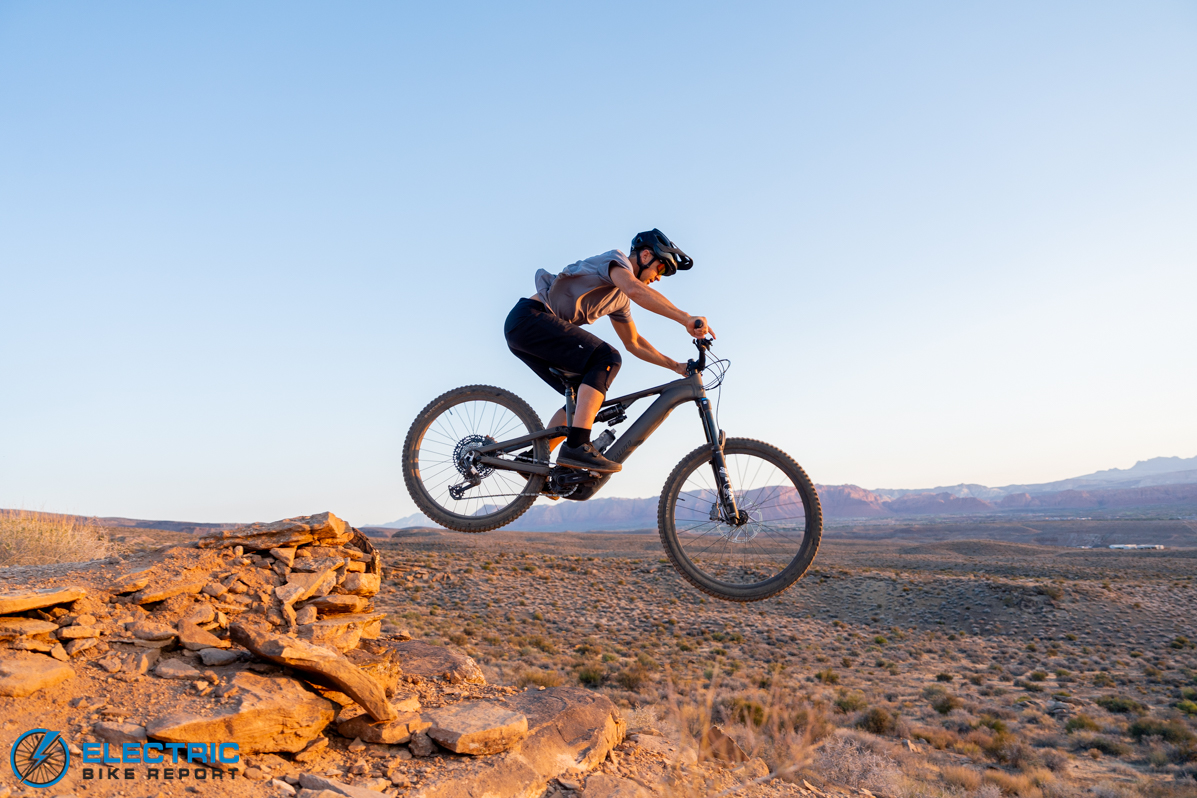
The Turbo Levo can fly, just look at Bryce!
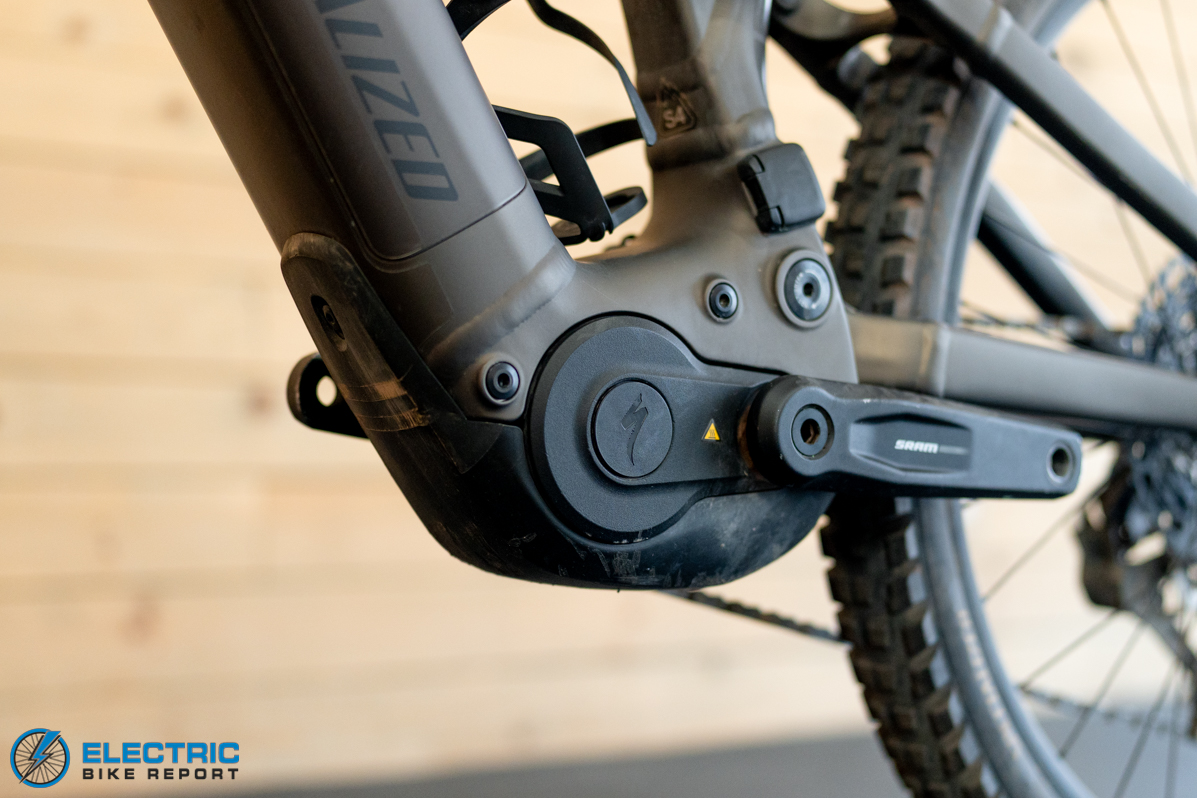
The Specialized 3.1 motor has terrific power and next level engagement and control.
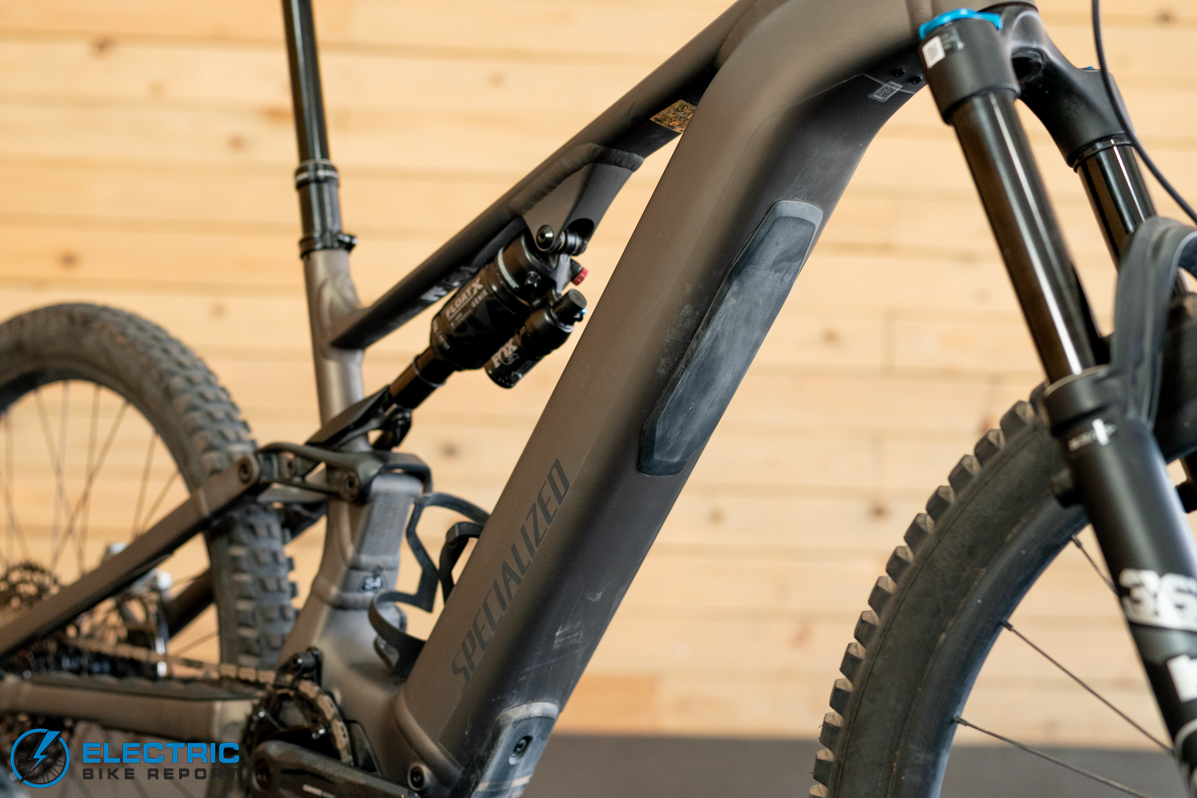
The 840Wh battery powers long rides. It did chunkify the downtube a bit in the process though.
Specialized Turbo Levo Comp Alloy Gen 4 Review: Motor & Battery
The Specialized 3.1 motor might make the case that this is all the power most riders will ever need from an eMTB built for singletrack.
With 666W of peak output and 101Nm of torque, it’s clearly a heavy hitter. Only a handful of motors exceed it in one or both categories—like the S-Works Turbo Levo (720W, 111Nm), the DJI Avinox (which started at 850W/105Nm and now reaches 1000W/120Nm after an OTA update), or Bosch’s updated CX and CX-R units (750W, 100Nm). While the weights vary slightly, we’re seeing the industry push the upper limits of usable power.
The real art of a great eMTB experience, however, lies in how that power gets delivered—and this is where the 3.1 motor shines. It turns that output into controlled speed with enough punch to launch you off flatter jumps and enough grip to stay planted on technical climbs.
It’s got all the grunt needed for sustained ascents and rapid, technical climbing alike. Whether you’re grinding at low cadence or spinning quickly up a steep grade, the motor remains smooth and responsive throughout.
Mechanically, the 3.1 marks a return to a system of just internal gears after the belt-driven 2.2. And despite the power increase, it remains impressively quiet, especially given the speed and steep terrain it enables you to tackle.
You get the usual Eco, Trail, and Turbo modes for low, medium, and high assist—or you can run Auto Mode, which dynamically adapts to your effort. That’s where we spent most of our time during testing, and it proved smart and seamless.
If you prefer to fine-tune things, the Specialized app allows deep customization of power settings. But even without the app, Micro Tune lets you make on-the-fly adjustments in 10% increments—perfect for adapting to unfamiliar trails without needing to dive into menus.
Another new development: the Gen 4 motor now supports speeds up to 28 mph. We loved the extra headroom on faster sections, though most singletrack riders will want to dial that back to stay within trail rules and etiquette, but if you’ve got an ATV or some sort of shuttle road, it’ll help you fly to the top and hit the fun stuff sooner.
Powering the motor is an 840Wh battery—a natural pairing for a bike this capable. It contributes to the bike’s nearly 57 lb weight, but you’ll really only notice that heft when lifting the bike onto a rack or into a truck bed—not while riding.
Charging is handled by a standard 4A charger, which is already faster than most. Additionally, a 12A “super charger” is available. That model features smart capabilities, including an 80% charge mode that is storage-friendly.
The battery is removable with a tool that tucks away inside the stem cap. Popping open the downtube reveals a tidy SWAT storage compartment near the headtube—perfect for stashing tools, CO2, or a small snack without needing to wear a pack.
If you’re looking to shave weight or open up even more storage space, you can swap in a smaller 600Wh battery. Or, if long-haul missions are your thing, you can add a 280Wh range extender in place of the bottle cage and hit a combined total of 1120Wh. While it would have been nice to choose the 600Wh battery at purchase for cost and weight savings, the fact that you have these options puts the Levo ahead of most full-power eMTBs.
The only hiccups we encountered were minor: our stem tool got stuck for a bit (easily fixed with a dab of grease), and our most aggressive tester managed to dislodge the battery on a particularly rough descent. A quick 1mm adjustment at a Specialized dealer fixed the fit, and it hasn’t been an issue since—nothing we’d consider a major concern.
In short, the Turbo Levo Gen 4 delivers motor performance that’s not only powerful but highly refined. Between the adaptive assist, quiet operation, and flexible battery options, Specialized has built a core system that’s as intuitive and capable as anything on the trail today.
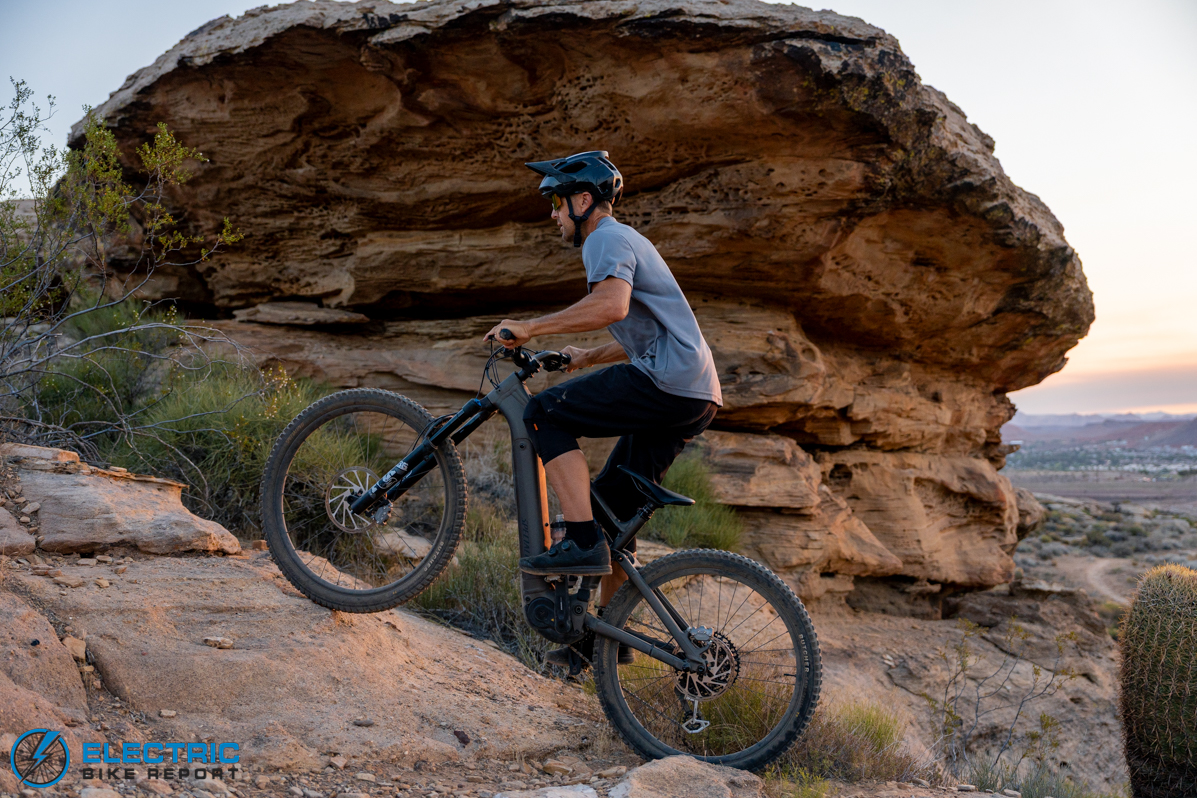
101Nm of torque can climb all sorts of steep slopes.
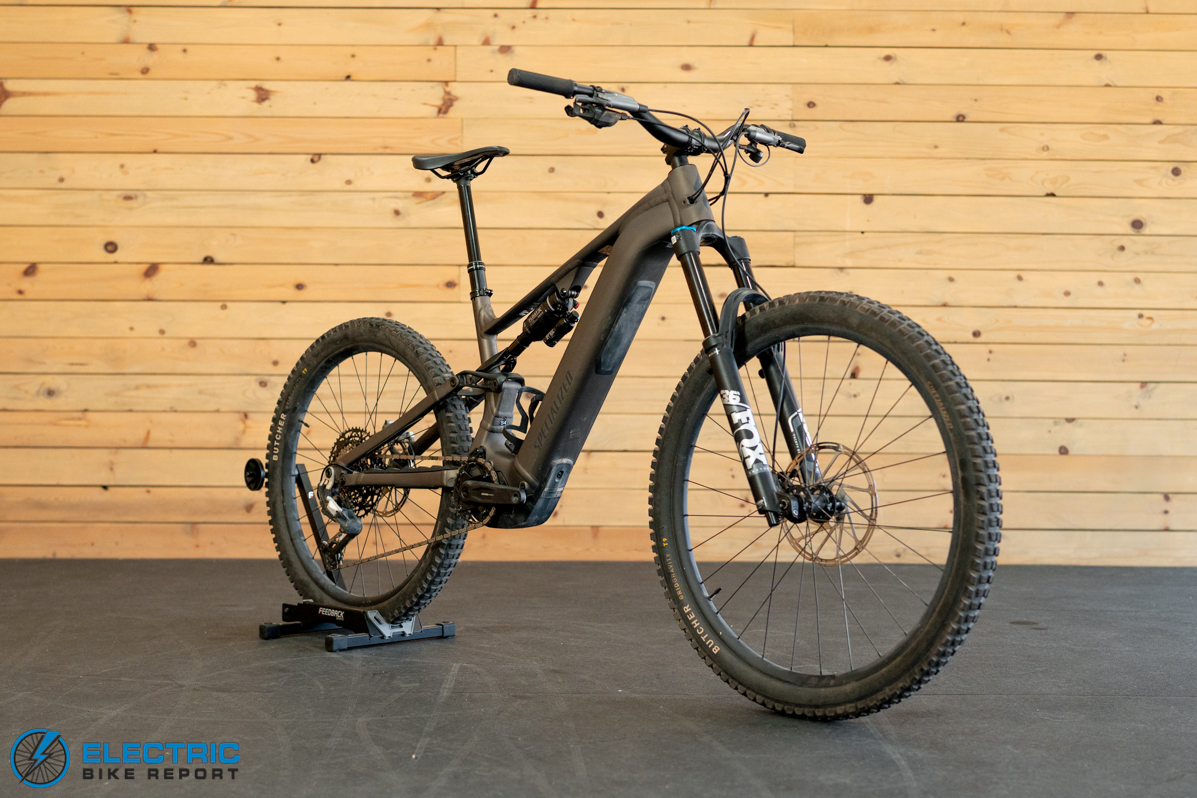
The Turbo Levo Gen 4 comes in six different frame sizes for finding a good fit.
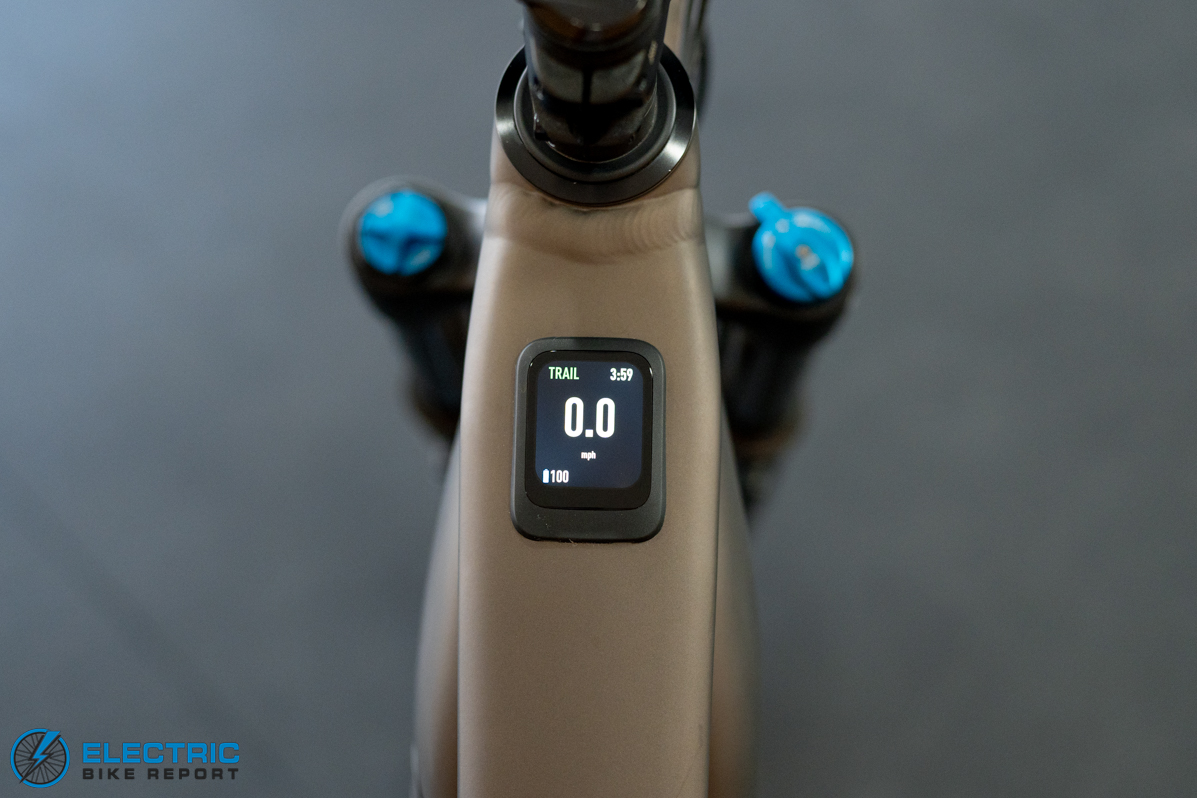
The top tube houses the MasterMind TCU display. It’s a clean fit and unobtrusive to the ride while keeping the handlebar uncluttered.
Specialized Turbo Levo Comp Alloy Gen 4 Review: Display & App
The Specialized app also stands out for several reasons. First, it gives you deep customization over the motor’s performance, letting you fine-tune support levels, engagement sensitivity, and even top speed to match your preferences.
It also adds smart features that respond to your phone’s presence. For instance, it can auto-start and end your ride when it detects the bike powering on or off, and it can automatically share that ride data with apps like Garmin, Wahoo, Strava, Komoot, or Apple Health.
Security is another strong point. The bike can auto-lock and unlock depending on whether your phone is nearby, and it includes added features like motion alarms, PIN-protected access, and Apple Find My integration for tracking and theft deterrence.
Overall, it’s a highly adjustable, well-integrated system that balances ease of use, security, and customization—seamlessly working in tandem with the sleek MasterMind display. It’s everything you really want from a bike of this caliber.
Specialized Turbo Levo Comp Alloy Gen 4 Review: Range Test
The Turbo Levo’s 840Wh battery is one of the larger units we’ve tested, but it’s paired with one of the most powerful motors we’ve ridden and housed in a heavier aluminum frame. Even with those range-reducing factors, the Turbo Levo delivered solid performance, one of our longest rides of similar full suspension rigs.
We logged a total of 27.02 miles with 2,885 feet of elevation gain—a respectable day’s ride for most, and a number that could nearly double with more conservative power settings.
Extrapolating from that result, you could expect roughly 8.9 more miles with the 280Wh range extender—let’s call it 36 total with the main battery, or you could expect about 19.3 miles total if running the smaller 600Wh battery alone.
This is one of the best results we’ve seen to date so I won’t analyze much: the bike has shown to be powerful, but capable of longevity too.
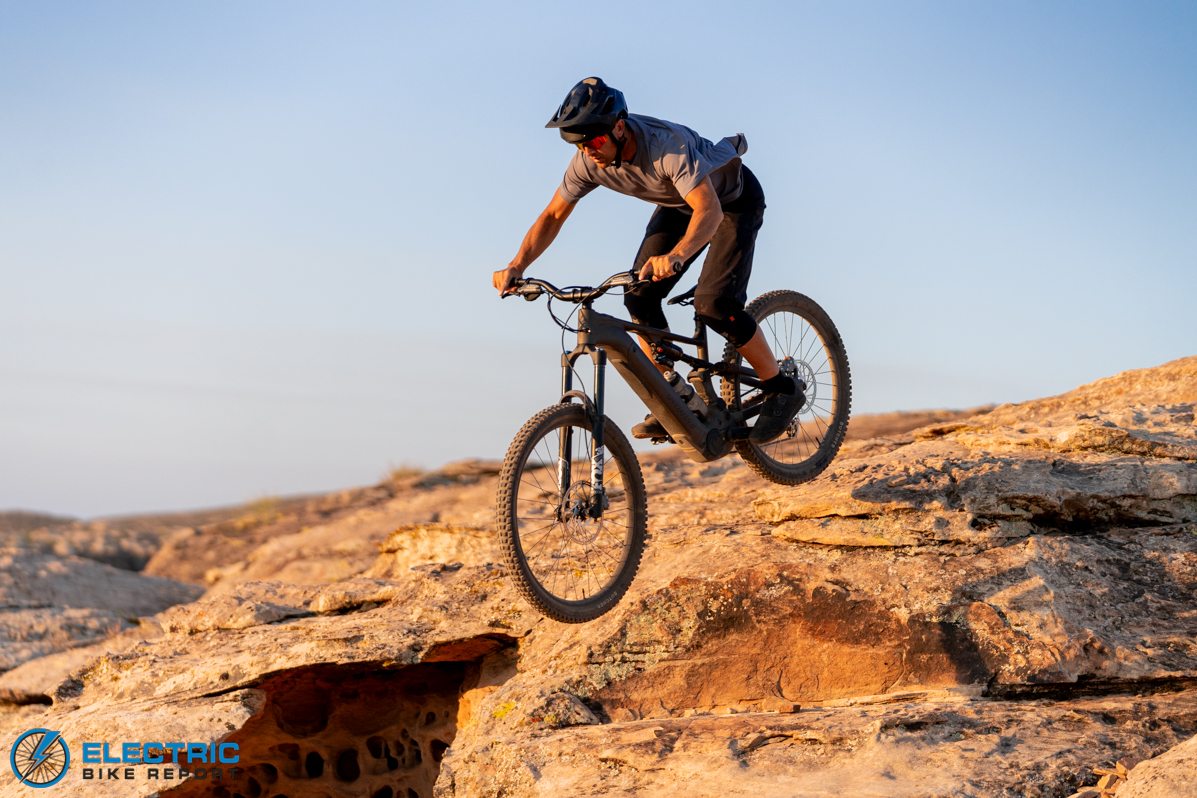
The Specialized Turbo Levo has a robust suspension that can handle a lot. It takes a little time to dial in, but is plush once you set it right.
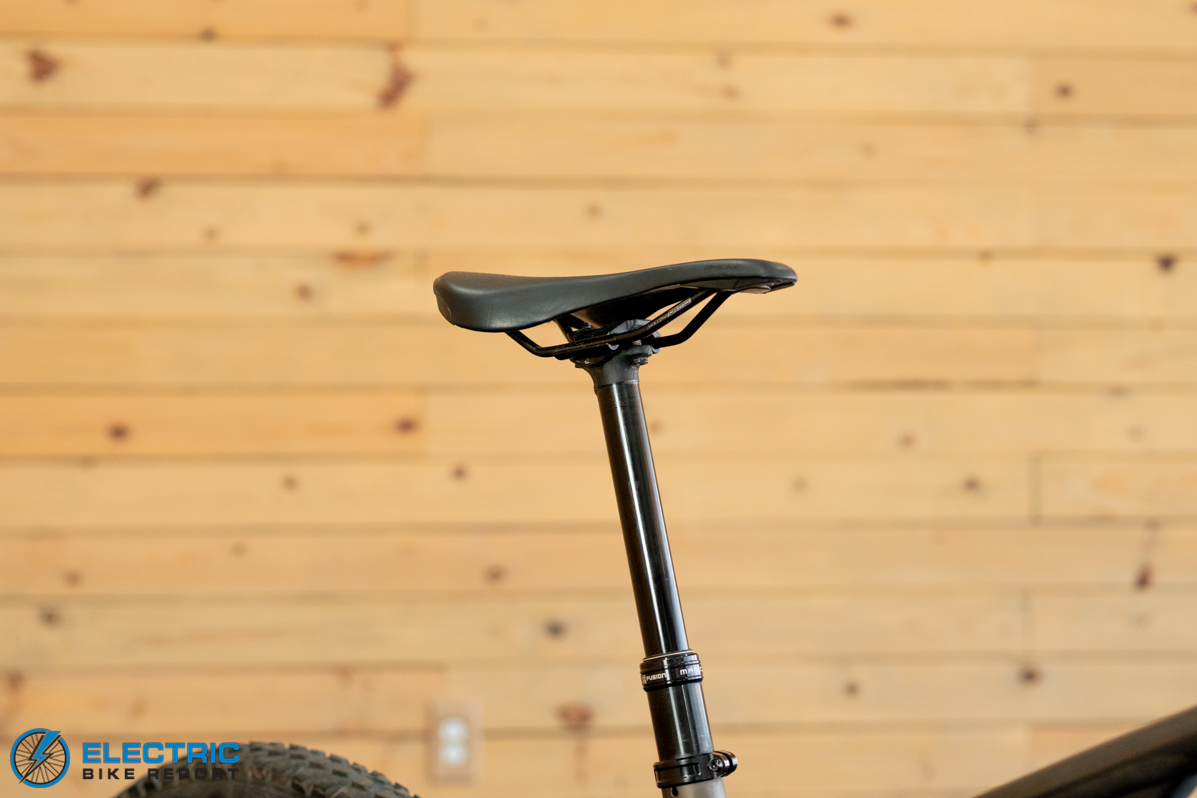
The dropper post comes with 100-190mm of travel depending on your frame, and it worked reliably in our testing.
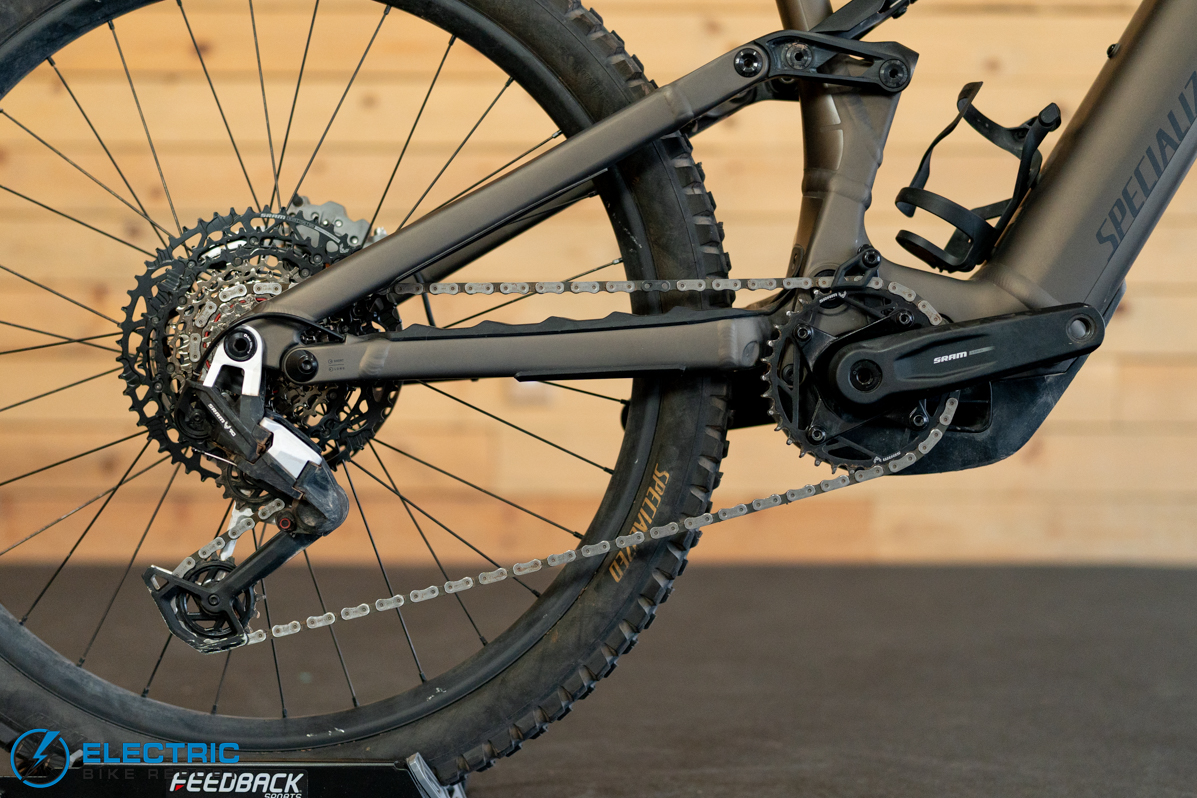
The SRAM Eagle 90 T-Type worked well, hsa plenty of range to work with for however you ride.
Specialized Turbo Levo Comp Alloy Gen 4 Review: Hill Test
First up is the Devil’s Backbone. This is our version 2.0 hill test that we run for every e-bike—whether it’s a mountain bike or a cargo hauler. It’s a half-mile climb with an 8% average grade, gaining over 200 feet of elevation. Since this is a new addition for 2025, we’re still building out comparative data.
But the real proving ground for our eMTBs is the Water Tower climb: a dirt trail exclusive to full-suspension eMTBs. It stretches 0.86 miles, averages a 5.5% grade, and climbs 245 feet.
Since the Levo can now reach 28 mph for the first time, we tested it on both climbs twice—once limited to 20 mph, and once opened up to 28.
On Devil’s Backbone, with the 20 mph limit, the Turbo Levo reached the top in 2:04, averaging 14.6 mph. At 28 mph, that dropped slightly to 2:02 and 14.9 mph—so not a huge gain, but still faster.
On the Water Tower climb, it hit 3:16 at 20 mph, averaging 15.9 mph. At 28 mph, it improved to 3:08 with a 16.6 mph average.
A few interesting notes here:
First, that beats the old Turbo Levo motor by a solid margin—we previously tested the lighter Gen 3 Comp Carbon on this same trail on the Specialized 2.2 motor, and it clocked in at 3:35. So we’ve definitely got more power on tap now shaving 19 seconds when set to the same speed.
Second, those times now rank as the first- and third-fastest we’ve ever recorded on Water Tower for a full-suspension eMTB with a Class-compliant motor. So it’s not just better than the last-gen Levo—it’s ahead of every other eMTB we’ve tested so far.
Bottom line: this thing can absolutely fly uphill—and it does it fairly quietly, too I might add. Most of the motor noise doesn’t even kick in until you hit around 20 mph.
Now, it does feel like you need a slightly higher cadence to really tap into the motor’s full potential, so make sure to shift accordingly. That said, it still feels like a natural pedaling rhythm—not something exaggerated or awkward.
Here’s what we loved about that 28 mph capability: it’s not about launching like a rocket, it’s awesome not to slam into a 20 mph ceiling. The steeper hill here is Backbone, and the bike was giving it all it had in either setting with nearly identical times.
But on a less intense grade, where opportunities to actually hit and surpass 20 mph are more feasible, it’s just nice to see the bike keep going and not be held back.
It’s not that you hit a hard wall at 20—but you can feel when the motor backs off and it’s more just you from there. By lifting that limit, the climb stays smoother, and you save meaningful time. E-bikes already make shuttle laps suck a whole lot less—this just dials that relief up a notch.
And as a final aside—we’re not saying to buy a Levo as a commuter bike, but if you’re looking for one bike to do everything, the 28 mph top speed and a backpack make this thing surprisingly viable as a daily driver too.
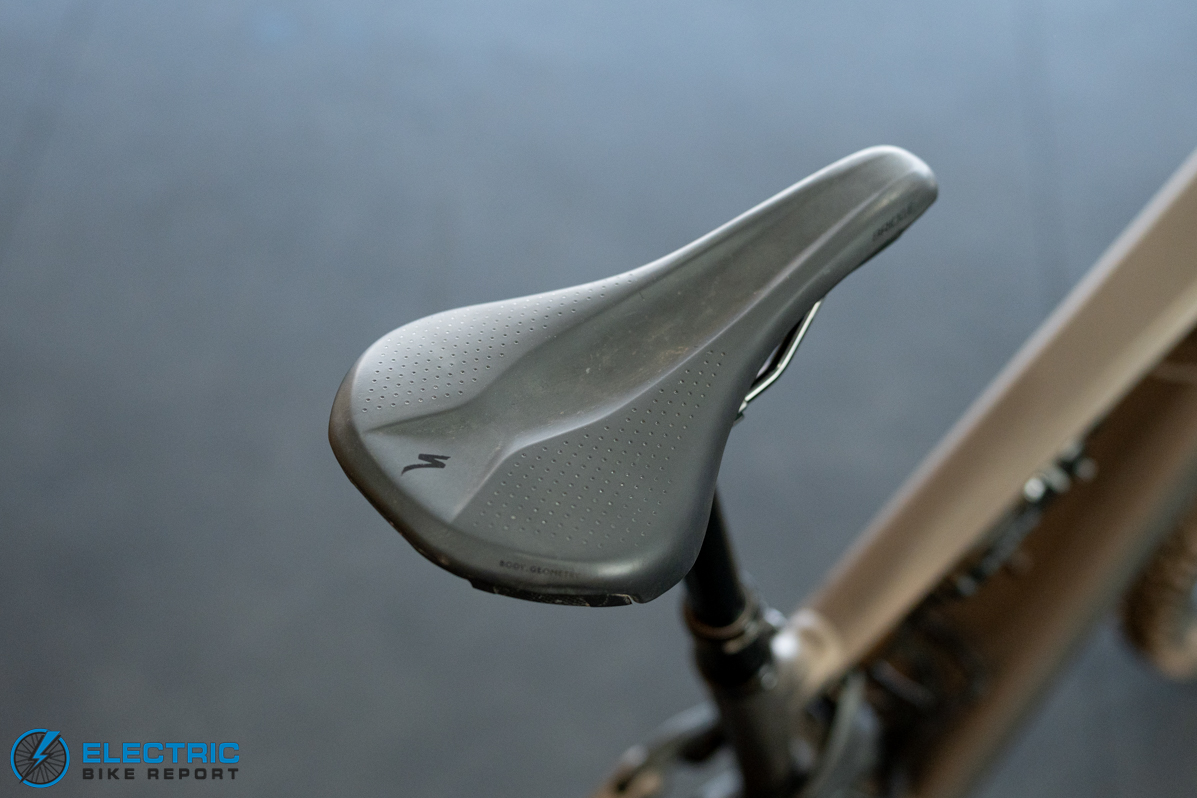
Specialized’s saddle feels supportive. No complaints.
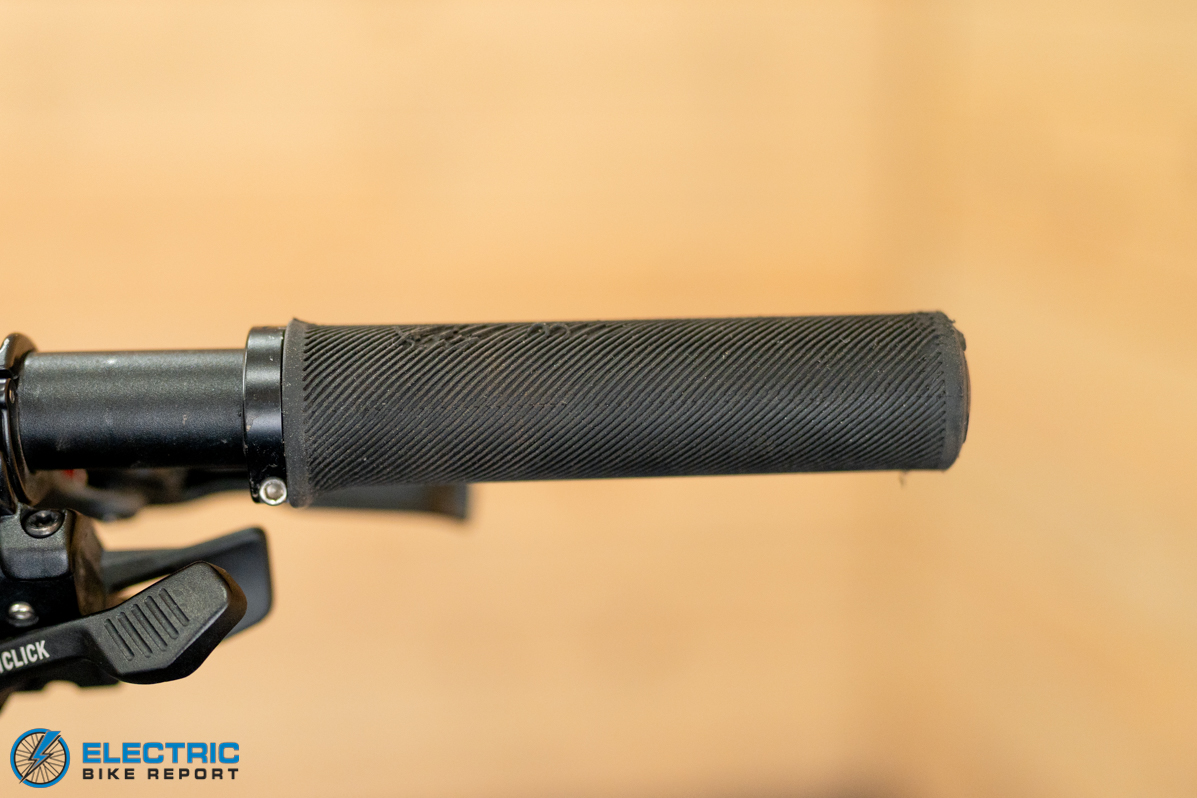
The grip is solid for a stock option, and the single-click shifter was highly responsive.
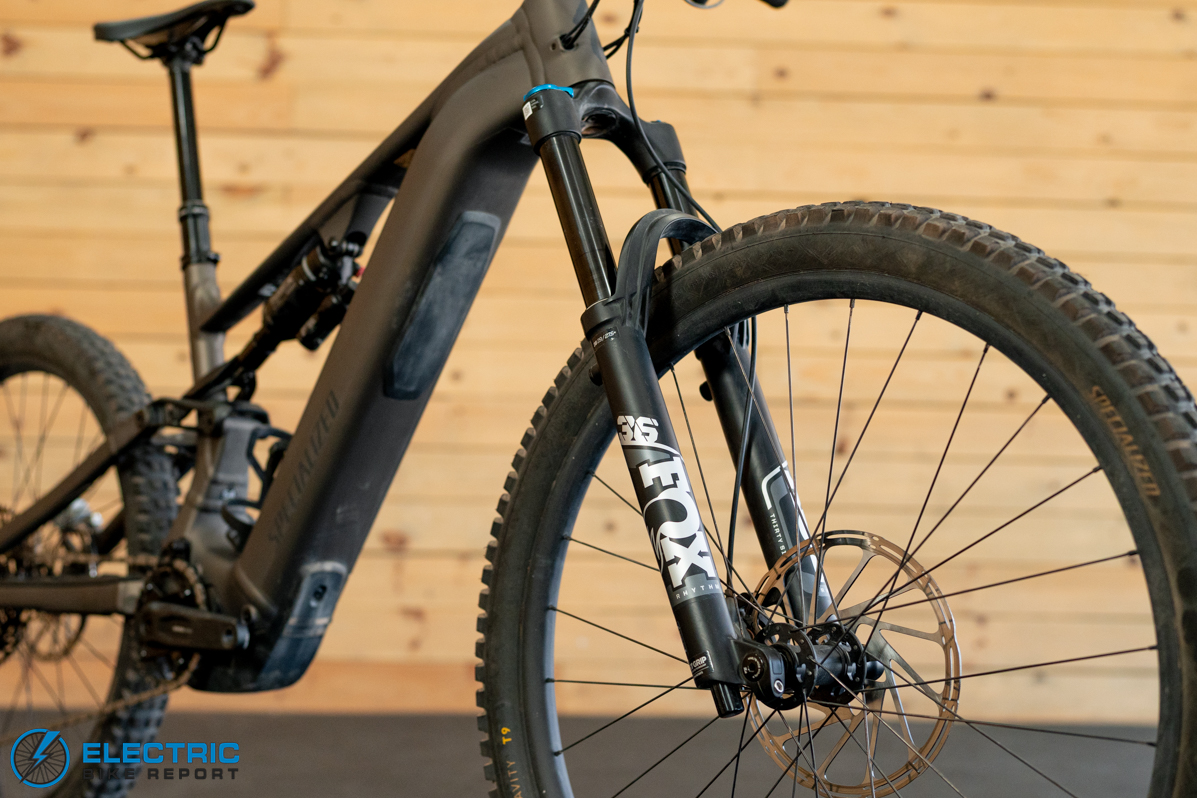
The 160mm travel was plenty for most of our riding, but riders with more downhill riding in mind should look to the Turbo Kenevo for more travel.
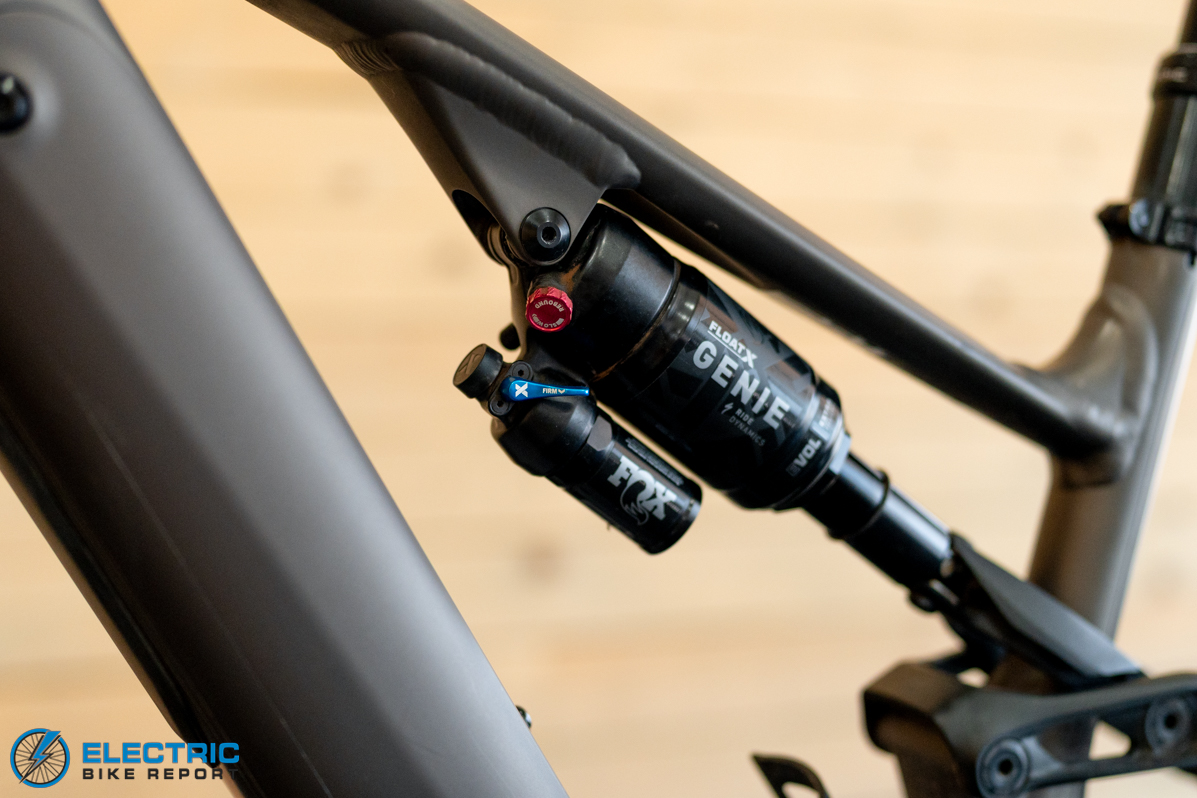
Specialized’s patented Genie tech allows for more dialing in of the stroke. It took some setup time, but we loved it once we got it figured out.
Specialized Turbo Levo Comp Alloy Gen 4 Review: Ride Quality
The shorter chainstays, paired with the smaller 27.5” rear wheel, help keep the bike feeling lively in corners. It handles with more agility than its weight would suggest.
And that’s part of what makes this bike special. Yes, it’s heavy. The motor and battery add bulk, the tires aren’t featherweights, and it’s an aluminum frame, not carbon. But the motor’s natural-feeling power delivery makes the bike feel lighter than it is. There’s little sense of tradeoff when you’re charging downhill—it’s built like an ox but nimble as a fox.
With 150mm of rear travel and 160mm up front, the setup leans enduro but proves versatile across a wide range of trail conditions. Even on the roughest, chunkiest desert terrain we tested in southern Utah, the Turbo Levo felt completely at home, eating up chatter and holding its line with confidence.
The suspension spec hits a solid balance. The Fox 36 Rhythm fork and Float X shock performed well, and Specialized’s GENIE system—also seen on the Stumpjumper—adds thoughtful progression. It’s designed to provide plush bump absorption through the first 70% of the stroke, then ramp up with more support near bottom-out. It took some fine-tuning to find the right settings, but the payoff was worth it.
The ride feels secure and planted, particularly on descents. The wide bars and 2.4” tires were a great match. Compared to the 2.3” rubber on the S-Works model (which we found underwhelming) or the overly sluggish 2.6” Butchers, the 2.4s struck a nice middle ground between rolling resistance and traction on techy trails. They’re not light, but they deliver where it counts.
As for the brakes—SRAM Mavens bring serious bite. They’re not even the top-tier version, but they clamp down hard and fast. Half our team loved them, the other half preferred something with a different lever feel. But personal preferences aside, they offered more than enough stopping power once dialed in.
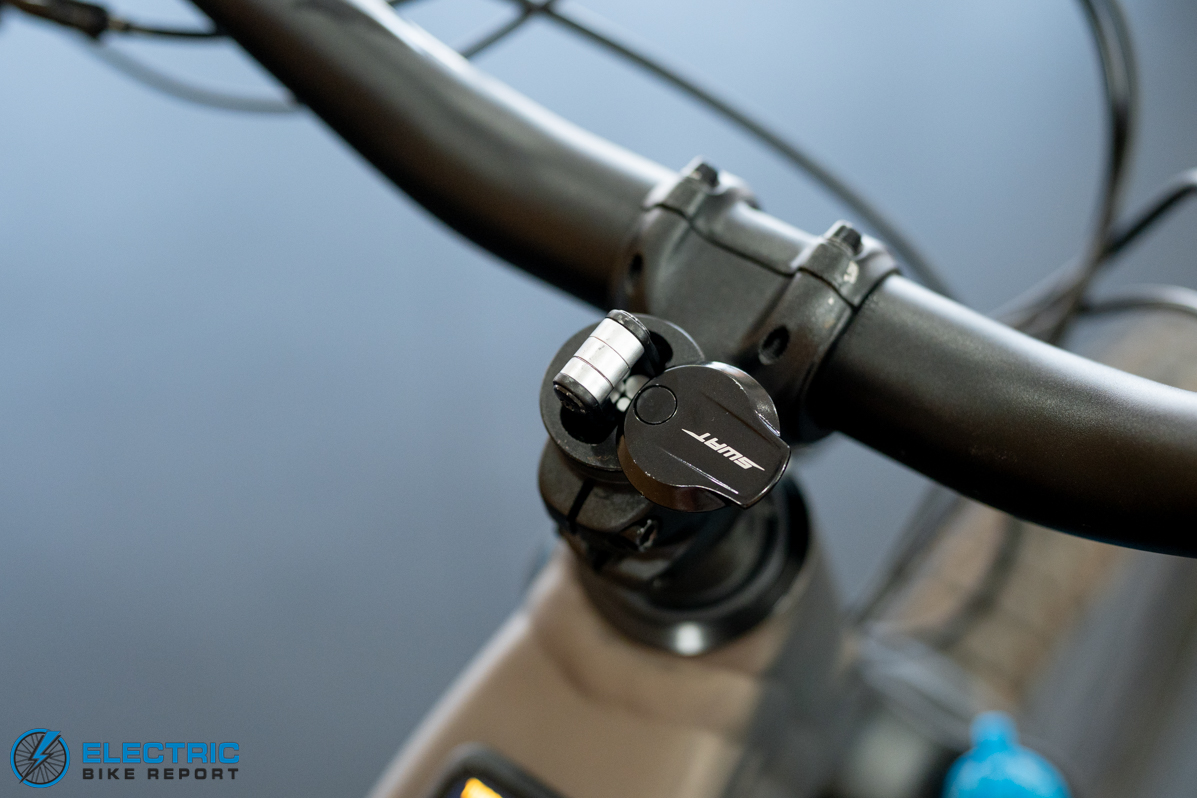
The stem cap houses a multitool which is handy. We needed to grese ours so it would stop sticking though..
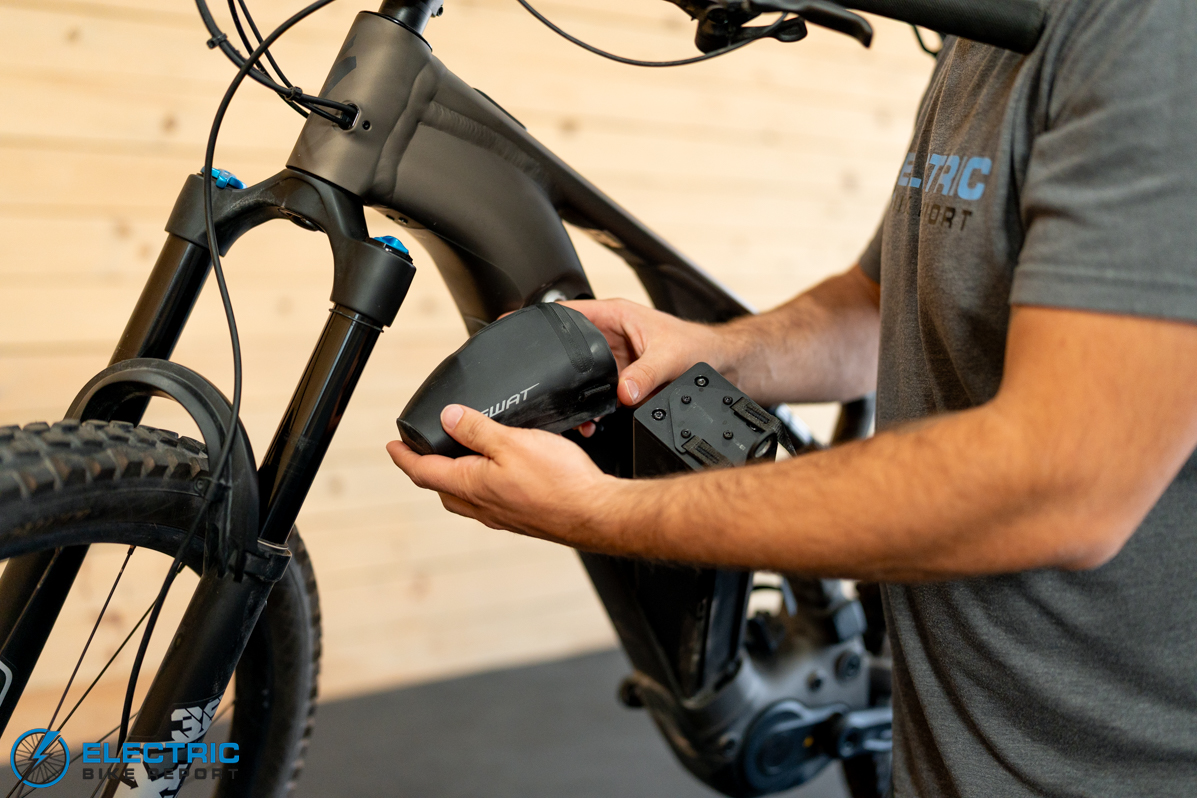
If you want to ride sans pack, take advantage of the internal SWAT storage for handling a small tire inflator, snacks, or whatever else you typically bring along.
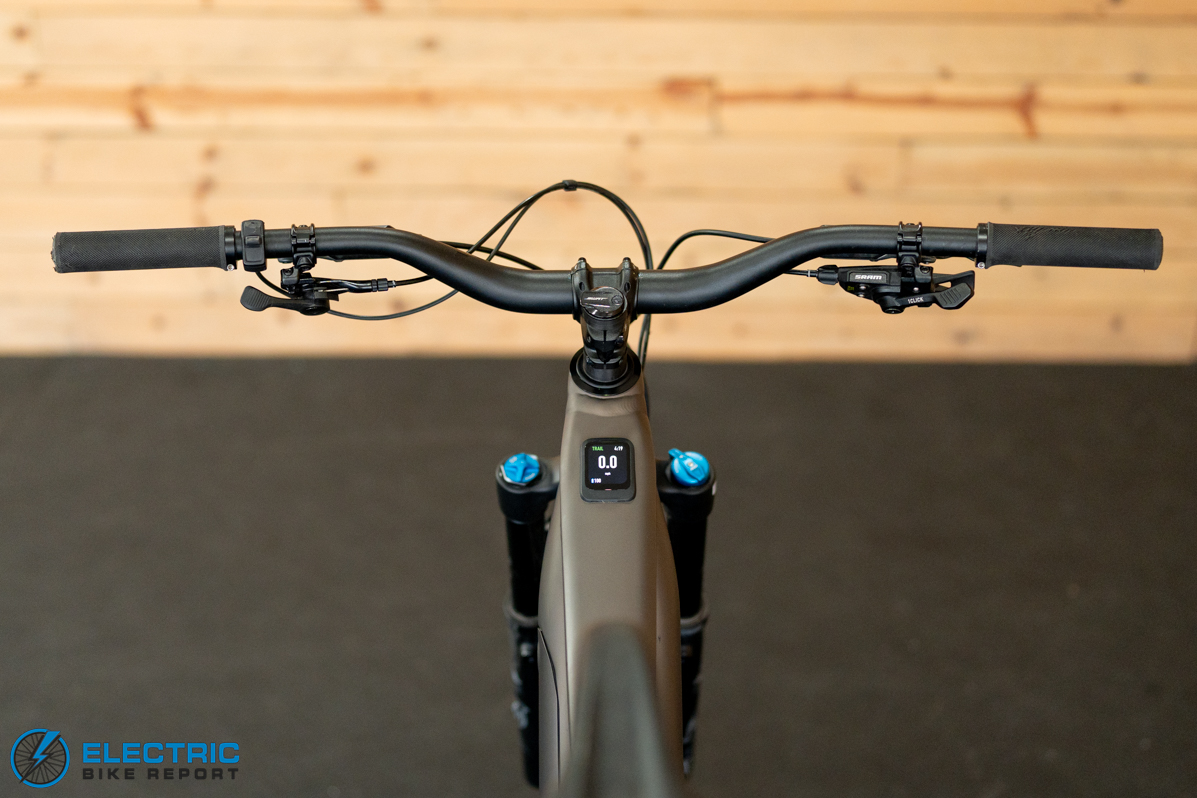
The 800mm bar allowed for great control, and we liked the amount of rise we got for making the ride more comfortable.
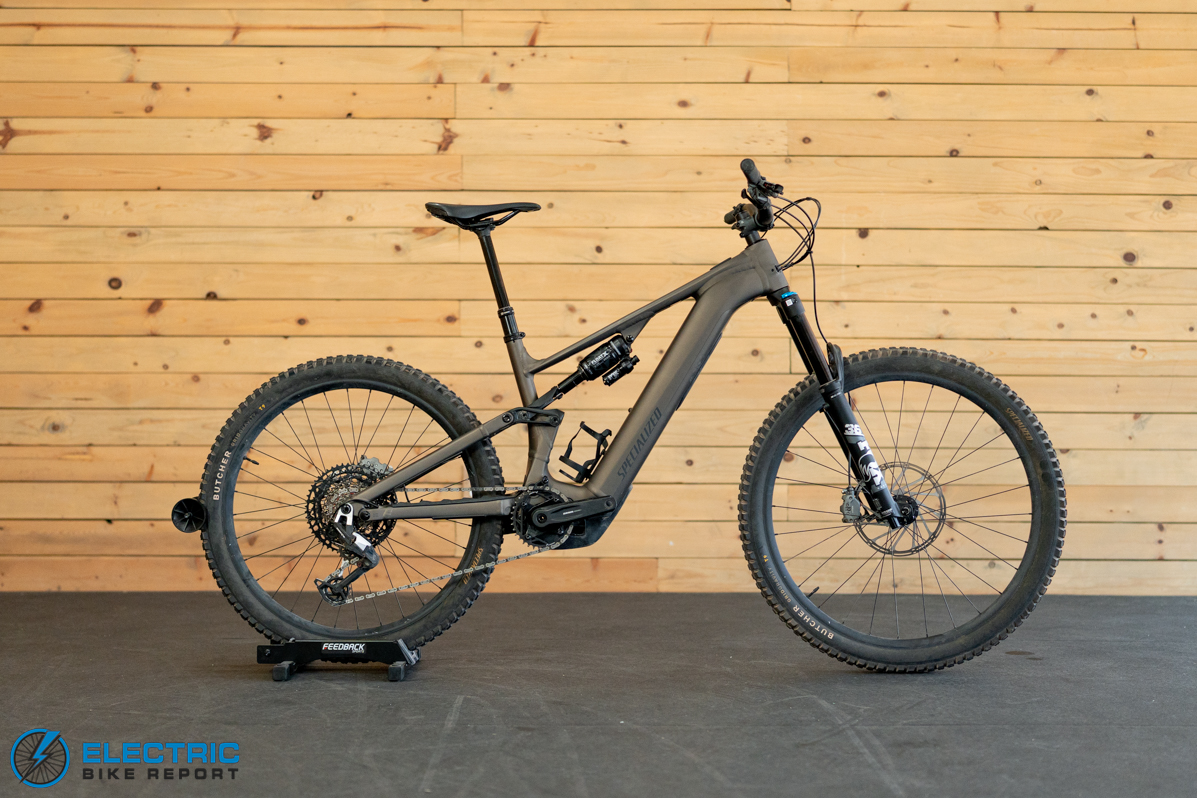
The bike is overall really well rounded and can do a lot on the trails. Try it for yourself!
Specialized Turbo Levo Comp Alloy Gen 4 Review: Summary / Where to Buy
The aluminum frame options offer accessible entry points for a broader range of riders. Those seeking a do-it-all eMTB with virtually no weaknesses—aside from some added weight—can step up to the Comp Carbon and get a spec package that doesn’t require immediate upgrades.
Alternatively, budget-conscious riders can start with the entry-level Levo Alloy, investing in a great frame, motor, and battery platform with plenty of upgrade potential down the road.
“Where super meets natural” really does this bike justice. The Turbo Levo has a remarkably intuitive and fun ride feel that opens the door to a wide range of trail adventures—and keeps the stoke high every time you’re out there.
“Where super meets natural” really does this bike justice. The Turbo Levo has a remarkably intuitive and fun ride feel that opens the door to a wide range of trail adventures—and keeps the stoke high every time you’re out there.
Happy Riding! Make sure to let us know if you have any questions or if you think we left anything out in this review of the Specialized Turbo Levo down in our comments section.



